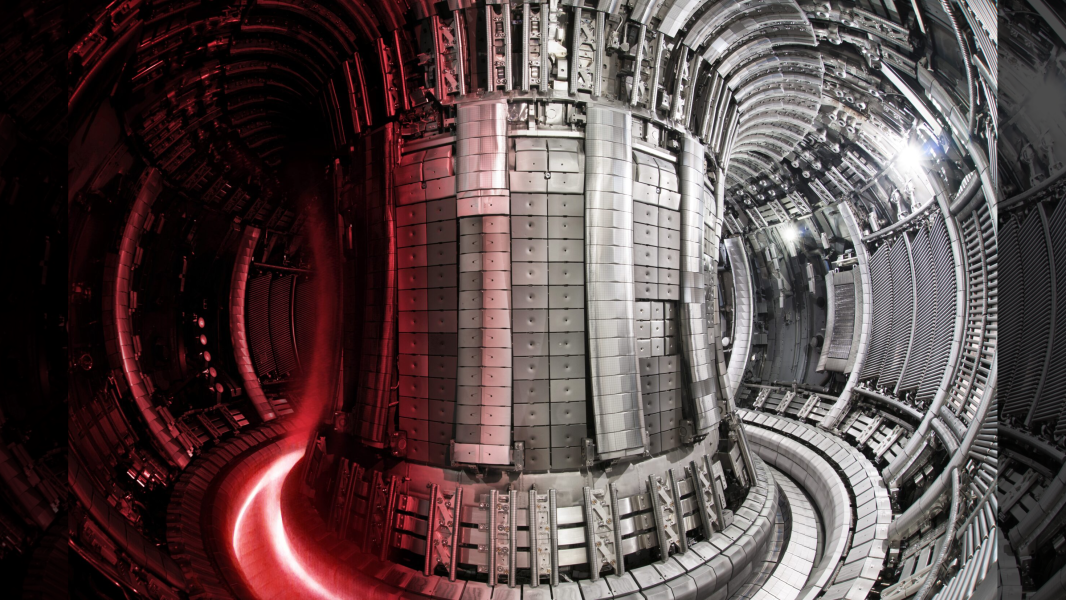
Inside the JET tokamak, with a superimposed image of the hot plasma (red). (Image courtesy of UKAEA, courtesy of EUROfusion)
A nuclear reactor in the UK has just set a new record for nuclear fusion.
At a press conference today (February 8), the Joint European Torus (JET) said the reactor's final test produced 69.26 megajoules of heat from just 0.21 milligrams of fuel – the equivalent of burning 4.4 pounds (2 kilograms) of coal. That's more total energy – though still no more net positive energy – than any other synthetic reaction achieved to date.
Such tests could help unlock the potential of nuclear fusion as a viable source of clean, virtually limitless energy, the researchers say.
JET was first launched in 1983 in Oxfordshire, England. Its doughnut-shaped design, known as a tokamak, allows scientists to convert modified hydrogen atoms into hot plasma by accelerating them to impressive speeds using a magnetic field. The device creates the necessary conditions for nuclear fusion – the merging of two light atomic nuclei into one heavier one, releasing enormous amounts of energy in the process.
Over its 40 years of operation, JET has achieved many significant advances in nuclear fusion, including being the first reactor to use a mixture of deuterium (hydrogen with an extra neutron) and tritium (hydrogen with two extra neutrons) atoms in equal parts, which is now considered the standard fusion fuel.
“We can reliably create fusion plasma using the same fuel mixture used in commercial fusion power plants, demonstrating the experience we have gained over time,” said Fernanda Rimini, JET's director of scientific operations.
But this record will be JET’s last. The project was decommissioned in December 2023, shortly after the record-breaking test. Researchers have already begun the complex process of disassembling the reactor, which is expected to last until 2040. During that time, they hope to learn more about what made JET so successful, including the impact of renegade plasma explosions on the tokamak’s internal structure. It will also help scientists develop safer methods for disposing of radioactive waste, the team added.
JET's legacy will live on in the International Thermonuclear Experimental Reactor (ITER), a massive tokamak in southern France scheduled to open in 2025. The $22 billion project will use a very similar fusion strategy, but on a much larger scale.
“Throughout its life, JET has been an exceptionally useful precursor to ITER,” said Pietro Barabaschi, ITER’s Director General. “The results obtained here will have a direct and positive impact on ITER, validating the path we are on and allowing us to move more quickly toward our performance goals once operational.”

Joanna ThompsonNavigate Social LinksLive Science Contributor
Joanna Thompson is a science journalist and runner based in New York City. She holds a BA in zoology and a BA in creative writing from North Carolina State University and an MA in science journalism from NYU's Science, Health, and Environment Reporting Program. Read more of her work at Scientific American, The Daily
Sourse: www.livescience.com





